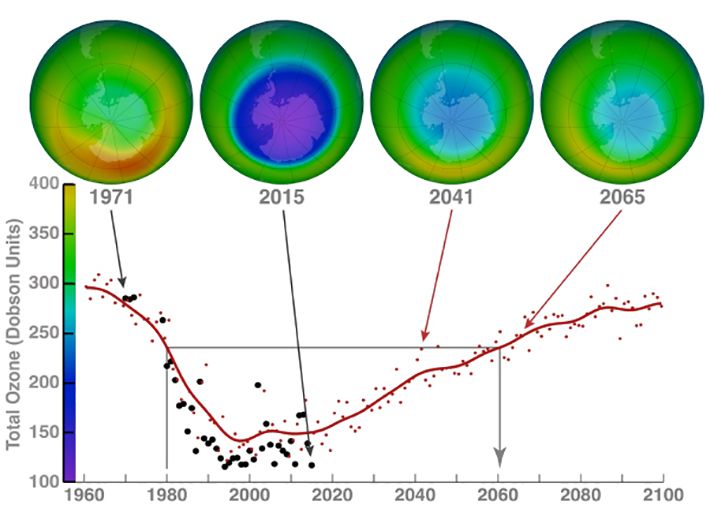Research Page
Monitoring the Ozone Layer
The Montreal Protocol, an international treaty designed to protect the ozone layer, and its amendments have banned the use of ozone destroying chemicals. Since the Montreal Protocol was signed in 1987, more than 100 nations have agreed to limit the production and release of compounds, notably human-produced chlorofluorocarbons, known as CFCs. The rate of ozone depletion seems to have slowed. The size and depth of the ozone hole have stabilized. The success of the Montreal Protocol is emerging in NASA satellite data. Important questions remaining: When will it begin to recover? Will it recover fully to pre-1970 levels? Time will tell.
Instruments onboard NASA satellites, such as Aura's Ozone Monitoring Instrument (OMI) and Microwave Limb Sounder (MLS), monitor the health of the Earth's ozone layer and provide insight into the complex chemistry and dynamics that influence it. This process-based understanding allows for the development of models, which predict the Antarctic ozone hole will recover in the latter half of this century.
Instruments onboard NASA satellites, such as Aura's Ozone Monitoring Instrument (OMI) and Microwave Limb Sounder (MLS), monitor the health of the Earth's ozone layer and provide insight into the complex chemistry and dynamics that influence it. This process-based understanding allows for the development of models, which predict the Antarctic ozone hole will recover in the latter half of this century.

